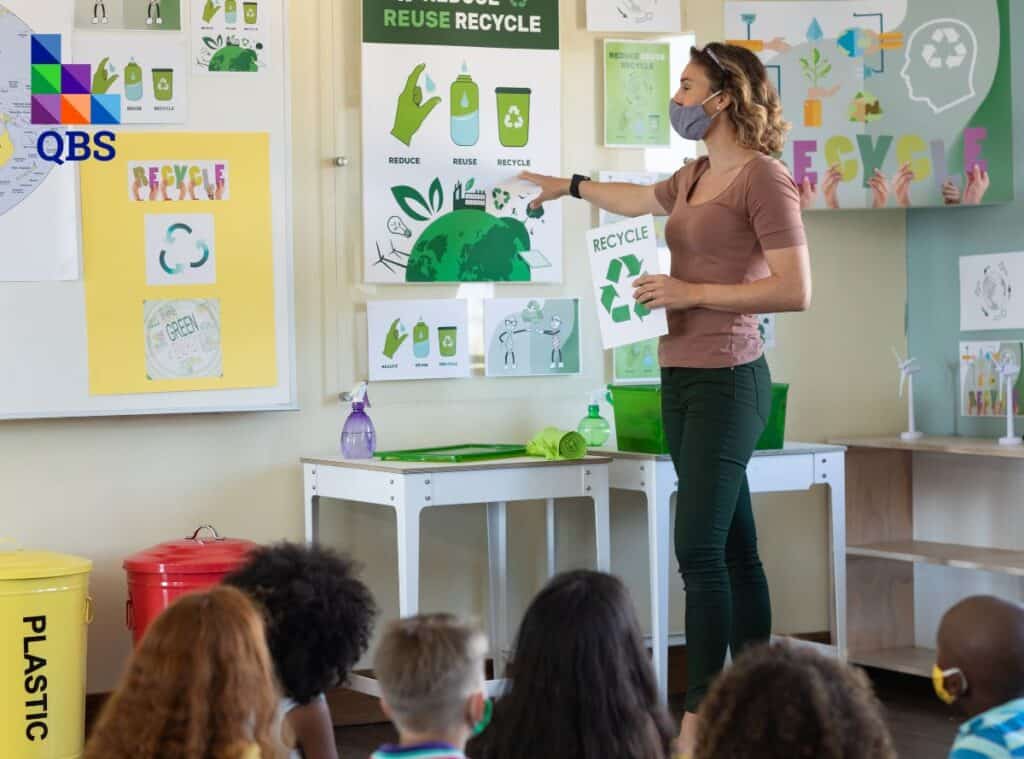The study of Applied Behavior Analysis focuses on making effective and socially significant behavior changes. Practitioners and researchers in the field work on identifying behaviors to increase or decrease and the environmental circumstances that will help to make those behavior changes.
Applied Behavior Analysis is the scientific study of behavior. It seeks to determine why everyone does the things that they do and how the environment, our learning histories, and individual reinforcers can affect the behaviors that we engage in. Understanding the ‘why’ in behavior then allows practitioners of the science to work on increasing behaviors we want to do (desirable behaviors) and decreasing the behaviors we don’t want to do (challenging behaviors). Practitioners will often look at things that happen before and after the desirable or challenging behaviors to help determine what may have caused the individual to engage in that particular behavior. Breaking behavior down like this when working in a classroom setting can really help teachers and educators better understand why students may be doing what they are doing – and can help to decide how to make changes to the behaviors we don’t want to see. This blog will go over different ways that teachers and educators can use some basic principles of Applied Behavior Analysis in their classroom and schools to see positive behavior changes. In doing so, educators can work to gain a better understanding of student behavior, enabling educators to introduce new skills and enhance overall student success and growth.

Using Differential Reinforcement
When introducing new skills or teaching desirable behaviors in a classroom, a teacher can use a method known as Differential Reinforcement. Differential Reinforcement is teaching new skills or desirable behaviors by reinforcing the behaviors or skills we want to see and withholding reinforcement when the student is engaging in behaviors we do not want to see. Simply put, a reinforcer is a consequence that increases the behavior that it follows; so if a child’s behavior is reinforced by praise from a teacher, whatever behavior or skill is praised should happen more often in the future. Using Differential Reinforcement to teach a new skill involves using frequent or random reinforcement when a student is engaging in desirable behaviors such as implementing a new learned skill and withholding reinforcement when a student is engaging in challenging behaviors. For instance, consider a student who regularly becomes distracted and disrupts others during independent work. This student really enjoys positive praise. Differential Reinforcement would involve the teacher setting clear expectations and providing positive praise when the student is working on their independent work in the absence of distraction or disrupting others. If the student were to engage in behaviors to indicate distraction or disrupting peers, the teacher would withhold the positive praise from the student. Instead, the teacher may choose to provide positive and specific praise to other students or engage in simple prompts to get the student back on track. As the student demonstrates the ability to engage in the activities independently, the teacher can provide praise less often. It’s crucial to offer this reinforcement while the student is engaged and on task to avoid reinforcing challenging behaviors.
Breaking down tasks
When introducing a new task or skill in the classroom, breaking the task down into smaller, manageable steps helps students grasp what they need to do and allows the focus to be on smaller steps as opposed to the ‘bigger picture’ or outcome. This approach is especially useful for students who find the whole task overwhelming or see it as unattainable. As the task is broken down, try to provide students with positive and specific feedback while they are working and after tasks are complete. Doing this will help to boost confidence, motivate moving onto the next step, and let the students know you see they are working hard. Even the most complex tasks, like learning a new math equation or writing an essay, can be broken down this way. For instance, the goal is for students to write an essay. An essay can be divided into steps: start with a couple of sentences about the topic, create an outline, write topic sentences that follow the outline, and expand each topic sentence into paragraph. The step-by-step process makes it more manageable than writing the whole essay at once. Remember, each small step they master is a building block toward their overall success.
Creating a routine
Incorporating a daily structured schedule into your class routine can help to clarify expectations, ensure students are well-prepared, set students up for success, and allow students to know what is coming throughout the day and when. For example, when students know that homework will be collected at the beginning of each class, they are more likely to complete it beforehand and have it prepared to turn in at the start of the class. Establishing a routine sequence of activities allows students to anticipate what is coming next and learn how to prepare for the day’s activities. For example, a teacher could structure a 6th grade history lesson by starting with a Do Now/Question of the Day, then moving on to homework collection, followed by the lesson with accompanied notes and a concluding the class with a discussion. The method of creating a daily routine brings consistency and predictability to the student’s schedule, it helps students know exactly what to expect, stay focused, and know what is expected of them. Of course, changes in schedule happen, but if teachers can keep their typical day-to-day activities and structure as consistent as possible, positive behavior changes can and will be seen.
Managing and setting expectations
In classrooms, teachers set expectations all the time. Expectations are set when it is time to line up to leave the classroom, while walking in the hallway, when transitioning from one location to another, in the lunchroom – and during so many other activities. It is very important that teachers are able to create, communicate, and follow through effectively on the expectations they have for their students. When a teacher is deciding on what expectations to set, it is important to think of them beforehand so that each expectation can be broken down into manageable, observable, relevant, and simple steps. Too many expectations can result in students feeling overwhelmed. Frequently reviewing expectations with the class (and 1:1 with students who have the need), is imperative to ensuring the set expectations are clearly understood. This may mean that setting expectations for the same routines occur daily or even multiple times a day. It is important when setting expectations that teachers are clear, concise, and consistent. In addition to setting the expectation, teachers should be sure to praise, follow through with the expectations and provide gentle reminders or prompts to students who may be struggling.
Visual Support
Using visual aids can make a big difference in keeping students focused and helping them understand the material. There are many types of visual aids teachers can use in and out of the classroom environment that will help to enhance learning and promote students to follow rules and expectations. Different aids can include visual schedules, key points in curriculum, flip charts, general classroom or schoolwide rules, activity expectations, or routine expectations – these can be presented with pictures, words or even both! Visual aids can be used on a ‘whole classroom’ level or be made to be given to specific students on a smaller scale. Many students benefit from visual learning, especially those with stronger visual memories or learning styles. Adding images to teaching material can further support learning; a student might find it easier to recall an equation or a concept when it’s linked to a specific image they’ve seen in class.
Understanding the environment
When discussing student behavior, it’s crucial to acknowledge the different social, cultural and emotional environments students come from. Students come from varied cultural backgrounds and some may face challenging circumstances at home that we may or may not be aware of. Understanding these aspects of a student’s life allows teachers to adjust their expectations appropriately therefore enhancing the classroom setting to support student learning and success. For example, a student may be made to go to work after school to make money to help their single mother afford rent or groceries and, in turn, they fail to turn in homework on time, if at all. Teachers can work to help this student by offering extended deadlines on homework, providing the student with more opportunity to work on the assignments in class, or modifying the work requirements. In another instance, a student may find it difficult to focus in a classroom environment that has bright lights, excessive external noise, or distractions from peers. By identifying these factors, a teacher can make targeted adjustments, such as relocating the student’s seat away from distractions, dimming the classroom lights, advocating for the student to receive a pair of noise cancelling headphones, or providing a quiet area for the student to go to. All of these adjustments can help to create a more conducive learning environment. Simple things that address basic needs, like providing a snack for a student who misses breakfast, can significantly improve their concentration and engagement. Moving a student’s desk to the front of the classroom to help minimize distractions can help to enable better focus and enhance the learning experience.
Being a role model
It’s essential to be mindful of your own behavior when establishing expectations for your students. For example, if you expect students to speak you at an appropriate volume, it’s equally important to speak to them at an appropriate volume. All students deserve to be treated in ways that communicate respect and promote dignity. This can be accomplished by strategies such as managing our own emotional reactions, accepting feedback (from colleagues and students alike), avoiding power struggles, accepting and validating feelings. Students reflect the behavior they observe in their teacher; therefore, treating students with respect and dignity fosters a positive and productive relationship between you and your students, enhancing the overall classroom atmosphere.
School Wide Implementation
Are you interested in implementing an ABA-based crisis prevention and management curriculum at your school? Safety-Care Training, which incorporates both ABA and PBIS methodologies, is currently being used in schools across the United States. To find out more about how you can introduce this curriculum in your school, please fill out the form below.
About the author

Ashley graduated with her bachelors from Penn State University in Rehabilitation and Human Services. She obtained her masters in Applied Behavior Analysis from Florida Institute of Technology in 2019. Ashley has provided care in a variety of settings using Applied Behavior Analysis including group homes, clinics, schools, and family homes. Currently, Ashley lives in Florida. In her free time she enjoys reading, visiting various theme parks, and traveling.